It’s not easy to top the joy of a Jewish wedding, which boasts near-overflowing happiness, centuries of Tradition, and plenty of celebrations. Central to these unforgettable events is the one most loved — Jewish wedding dances. From the timeless Hora to the popular Electric Slide, the dance floor is where generations come together, cultures intertwine, and love is celebrated with every sway and step.
A Dance Floor Like No Other
Close your eyes and see: the music climbs, a Klezmer melody fills the air, hands start to clap in unison, and all at once, the floor is moving. This isn’t just a party, it’s a cultural gesture, a sign of unity and a dance of joy handed down through generations.
Jewish wedding dances aren’t only about movement; they’re about connection, community, and joy. Jewish or not, dancer or gawker, puzzled about what it’s all about, once you’re on the dance floor, you’re in a world of meaning and memory.
Hora Icon: A Party in a Circle
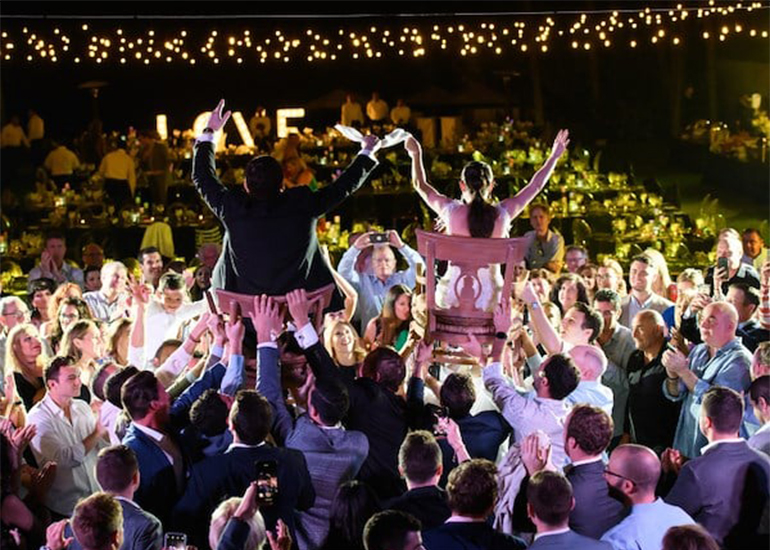
When anyone thinks of a Jewish wedding dance, the picture that first springs to mind is the Hora for good reason; this lively round dance is the centrepiece of almost every Jewish wedding.
What is the Hora?
A traditional dance in which guests form a circle, hold hands, and then dance energetically around the bride and groom. As it goes, the dance also accelerates, overlaying an exhilarating, almost dizzying rhythm of movement and cheer.
Chair Lifting Tradition
To many revellers—and this reporter—a highlight of the Hora is when the bride and groom are lifted on chairs, raised above so many joyous heads. Their hands holding a napkin or handkerchief are also lifted — a symbolic act of solidarity and celebration.
Symbolism
The Hora is not just for partying (though that is definitely part of the deal!). It represents the support of family and friends in their future life together and is a tangible reminder that they are embraced, not just by love but by love made manifest in tradition.
The Mezinke Tantz Dance: Paying Tribute to Parents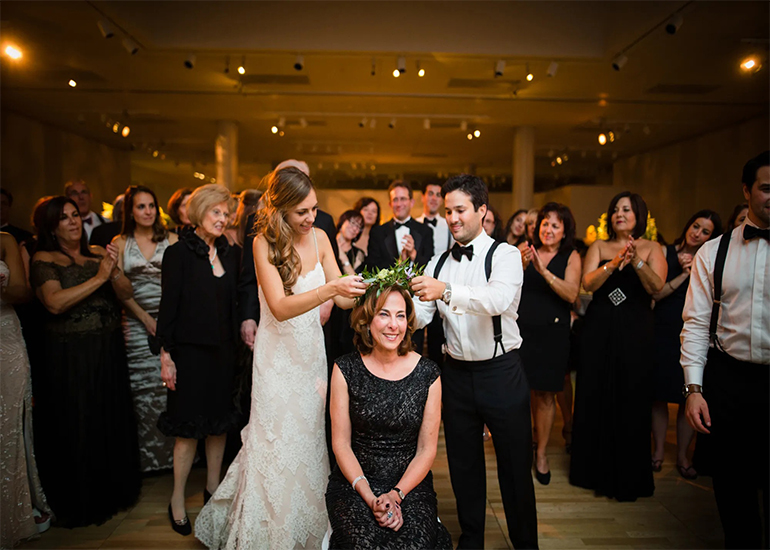
Another special time during a Jewish wedding dances is the Mezinke Tantz, or the mother-in-law dance. (It’s a dance of parents in general and mothers in particular who are marrying off their last child.)
Tradition and Meaning
The Mezinke Tantz is not just a dance; it’s a marker of passage. Parents typically don’t wear floral crowns or take a seat as they’re honoured by friends and guests who dance around them. Other times, they take brooms, ceremoniously “sweeping out” the past and making room for a new chapter.
It’s an incredibly emotional and moving moment that serves as a reminder that weddings are not only gorgeous beginnings but the end of one chapter and the start of another.
Crowning the Matriarch, the Krenzl
In some Ashkenazi traditions, this also includes the Krenzl or “crowning” dance, which is performed at the wedding of the last daughter. Women relatives, garlanded with flower crowns, dance around the bride’s mother, sprinkling her with blessings.
It is an intimate ritual that celebrates matriarchal pride, feminine empowerment, and heritage; Tradition merges respect with pure joy.
Sephardic and Mizrahi Rhythms: A World of Color and Sound
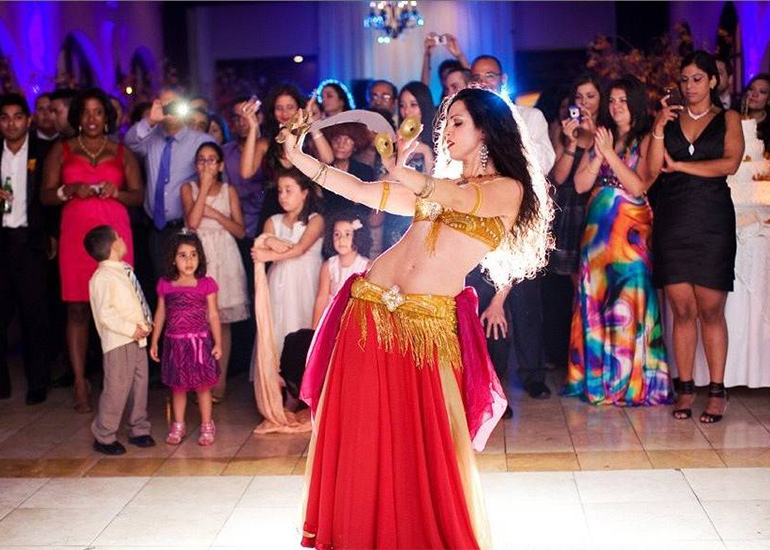
But while Ashkenazi Jews brought us the Hora, and the Mezinke Tantz, Sephardic and Mizrahi Jewish weddings are a whole other flavour of party. Rich in Mediterranean and Middle Eastern culture, these festivities are always punctuated by exciting dances and heartfelt music that can enhance the wedding ceremony.
Belly Dancing
At the Sephardic wedding ceremonies, belly dancing (which emphasizes sensuous, sinuous motion and fabulous costumes that rarely leave the spotlight) is an even more frequent occurrence. On occasion, professional dancers are hired, but often, it is a collective community effort, with guests taking turns to celebrate the bride.
This is not just a tradition of entertainment — it’s a powerful statement on feminine beauty, fertility, and joy.
Debke: Power and Unity with Each Step
The Debke is a form of line dancing that is energetic and lively and is usually performed at weddings and other joyous celebrations in the Middle Eastern Jewish community. Dancers hold hands or put their hands on each other’s shoulders and stomp out the steps to a strong beat, all clapping together.
Why it matters:
Debke is not just fun; it’s a statement on the power of community, shared rhythm, and collective joy. Its roots stretch back through the ages, but when played at a wedding, it sounds electric and alive, more than a bit wild.
Dances of Regions, Rich in Meaning
Every Jewish community from Morocco to Yemen to Georgia adds its own regional dance traditions to the Jewish wedding floor. These dances might be:
- Elegant hand movements from Persian Jews
- Spirited group dances from Bukharian Jews
- Rhythmic footwork from Kurdish Jewish communities
These traditions serve as a reminder that Jewish identity is multi-dimensional and global and that weddings are a context in which these rich histories can take centre stage.
Modern Twists: The Electric Slide and Beyond
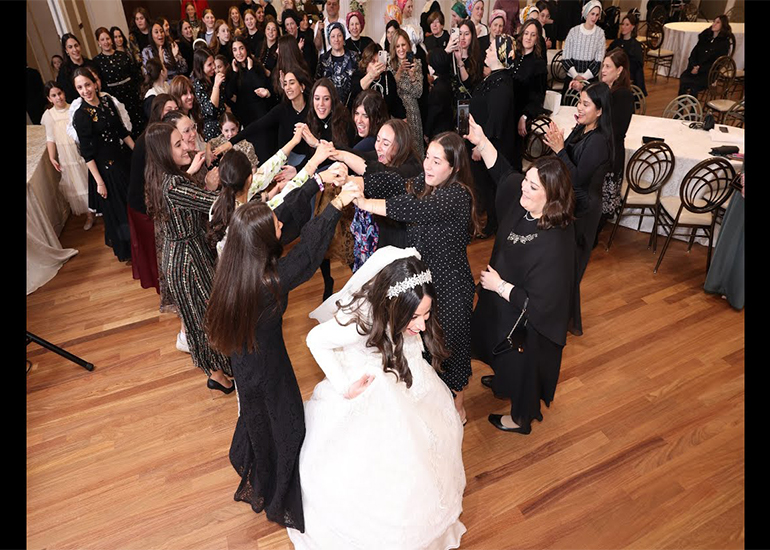
In many Jewish wedding dances, Tradition meets the 21st century, and the Hora is followed by the Electric Slide, the Cupid Shuffle, or even the Macarena. These entertaining line dances will get every guest, even the ones who don’t know the traditional step, up and on their feet!
Why include modern dances?
Because inclusivity is key, today’s Jewish weddings are likely to combine the old and new so that all, no matter what their age or background, can enjoy the merriment and feel a part of the celebration.
Simcha Dancing: Finding Joy in Every Jump
Simcha is the Hebrew word for joy, and Simcha dancing is the umbrella for crazy celebrational dancing, frequently improvised, that happens after the Hora.
You’ll see:
- Guests holding hands in spirals
- Part III: Guests dancing in circles, lines, and chains
- Acrobatic stunts (that’s right, handstands and flips…)
- Humans are making tunnels and dance-line games
This is turn-loose, live-in-the-moment, pure, unclean, joyously surrendering to the couple’s happiness, dancing.
Gender-Specific and Mixed Dancing Traditions
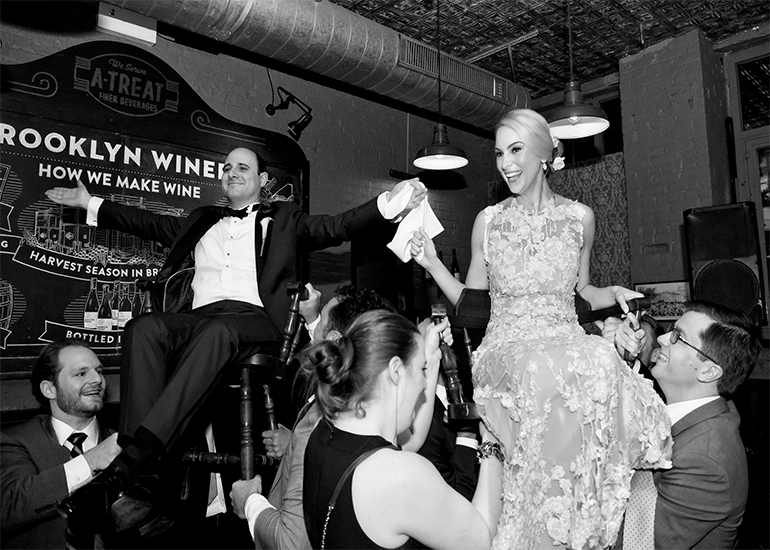
On the level of religious observance, in some Jewish weddings, there is separate dancing for the men and the women, while others have mixed dance floors.
- Orthodox weddings often divide the dance floor with a mechitza (partition).
- Conservative and Reform weddings usually have mixed dancing where everyone joins together.
Everyone is a testament to the sensibilities and comfort of the families featured, but the joy you will not be surprised to hear is absolutely universal.
Live Music or DJ? The Soundtrack of Joy
There would be no dancing without the music, which is every bit as varied as the dance itself. At some weddings, the music is a live Klezmer band; at others. It’s a DJ spinning the traditional Hora song as well as Beyoncé.
Some popular Jewish wedding dance songs:
- “Hava Nagila” – the quintessential Hora anthem
- “Od Yishama” – a classic celebratory tune
- “Siman Tov u’Mazal Tov” – a wish for good fortune
- Contemporary Israeli pop and global dance hits
The juxtaposition of the old with the new is a charged energy that feeds the show from beginning to end.
How to Join the Dance (Even if You Don’t Know the Steps)
Nervous that you won’t know what to do? Don’t be. On the Jewish dance floor: Participation over perfection. Guests are encouraged to jump in, follow the crowd, and let loose.
Here’s how to take advantage of that fact:
- Watch and mimic: most dances are repetitive and easy to follow.
- Join the circle: someone will gladly take your hand.
- Smile and move: the joy is contagious.
- Ask someone: guests are happy to explain the steps or pull you into the fun.
Why the Dance Floor Matters More Than You Think
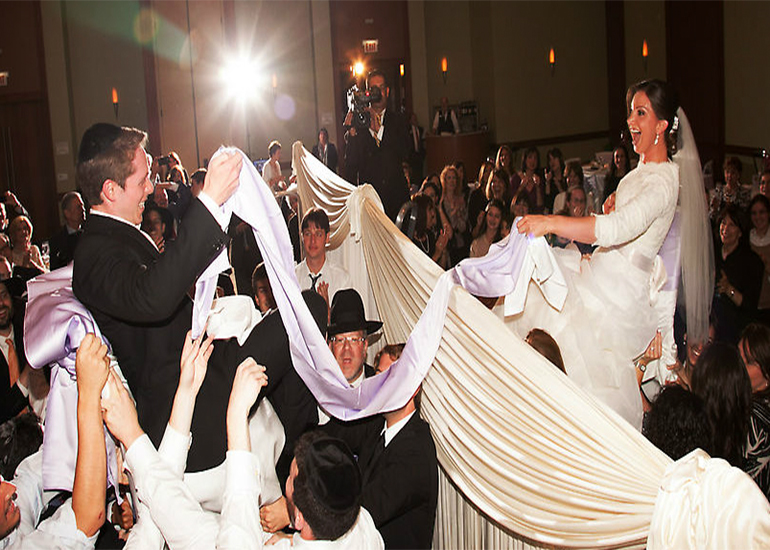
Jewish dancing at a wedding is not just fun — it’s spiritual, communal, and symbolic. It is a ritual of joy, a statement of unity, and a celebration of life.
It represents:
- The support of the community lifts the couple emotionally (and literally).
- The continuity of Jewish heritage is achieved through both traditional and modern expression.
- The joy of family and friends, woven into every step and stomp.
A Joyous Legacy That Lives On
From the raucous round of the Hora to the sensuous swirls of belly dancing. Jewish wedding dances provide a living testimony of culture, faith, and festivity. They bridge generations, pay homage to the past, and make memories for a lifetime.
Whether you’re sweeping a broom in the Mezinke Tantz, stomping to a Debke beat or giggling along to the Electric Slide. You’re not just moving you’re dancing through history, through community, through love.
Hence, the next time you’re at a Jewish wedding, please don’t hesitate. Enter the circle, feel the rhythm, and become part of something beautiful that has no end.

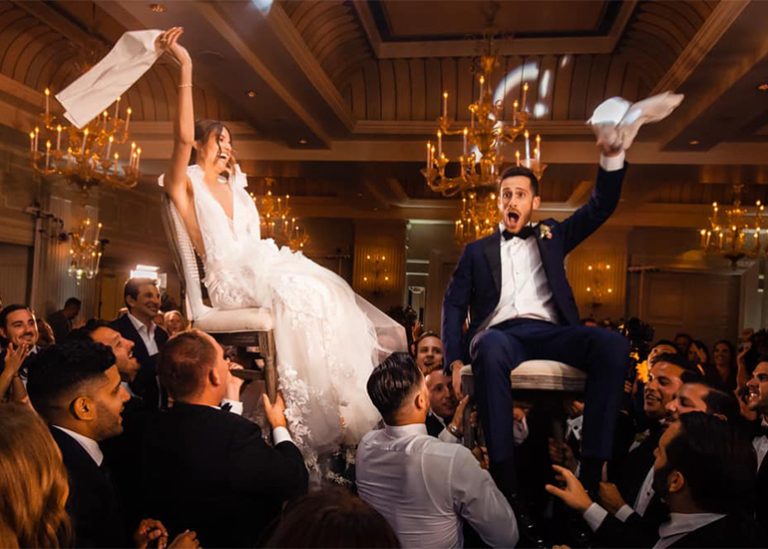

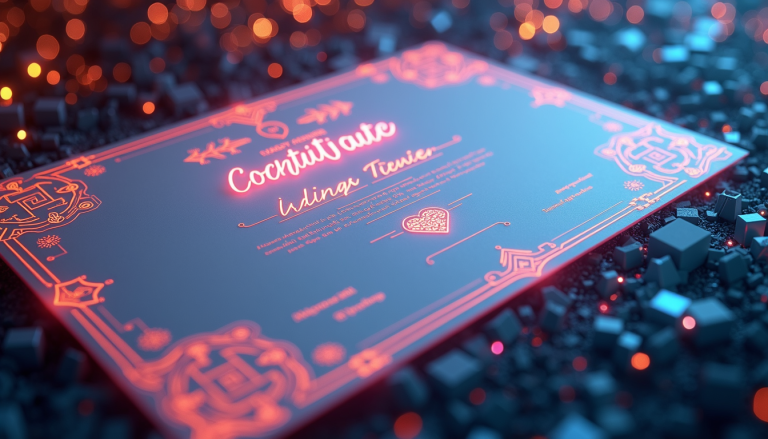
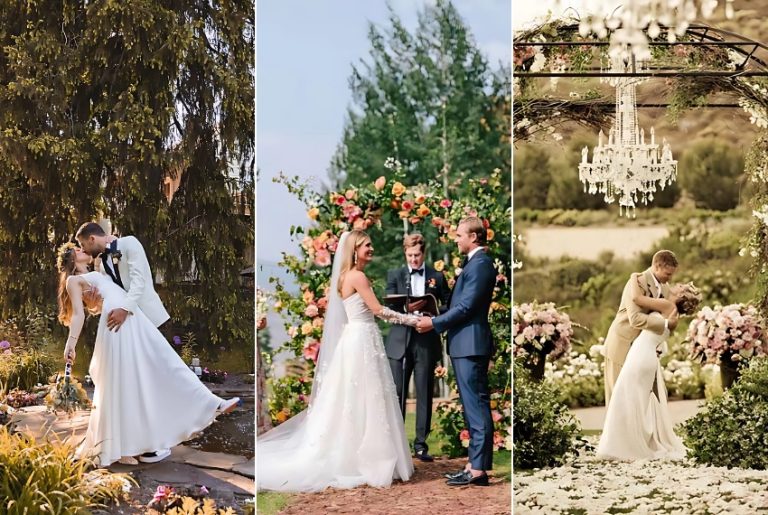
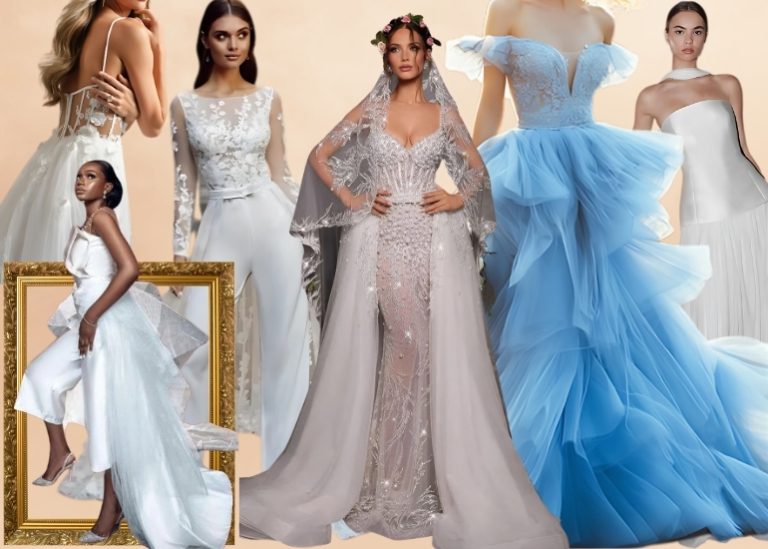
Comments are closed.